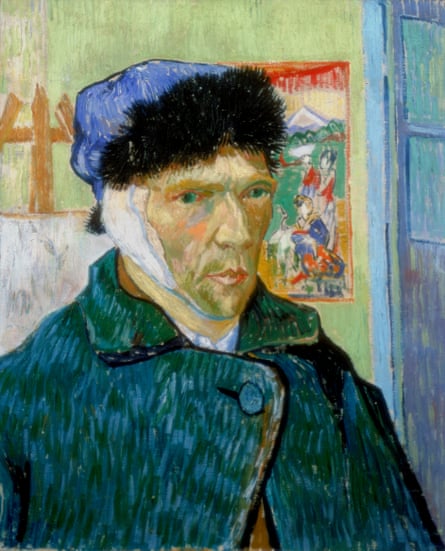I am happy to announce a new annual award, the Vincent Prize for Scientifically Proving the Bleeding Obvious about Art History. The first winners are the researchers who, the papers tell us, have used chemical analysis of Vincent van Gogh’s paintings to reveal the astonishing fact that – get this – his art changed after his mental breakdown in late 1888.
Well knock me over with a virtual feather. Without this research, I would never have noticed that the golden glow of Sunflowers, which Van Gogh painted in a blaze of optimism in the summer of 1888, while looking forward to Paul Gauguin joining him in the Yellow House, communicates a rather different mood to the spiky, agitated lines and violent greens of Long Grass with Butterflies, painted in 1890 in Saint-Paul Asylum.
Anyone who looks at Van Gogh’s paintings for long can see the whirls and spirals of pain, the colours of melancholy that seep into his paints after his crisis – ghostly blues and demonic greens replacing the searing yellows of his joyous 1888 summer. He even shows his psychological state to us directly in his Self-Portrait with Bandaged Ear (1889), hanging now in London’s Courtauld Gallery.

Seeing such things in art is what we do when we go to galleries; it is a subjective and subtle process of discovery. Now that relationship has been short-circuited by misused science. To “prove” by chemical analysis of his colours that Van Gogh’s expressive art reflects his evolving (and after 1888, downwardly spiralling) moods is pompously to state as a scientific discovery what any sensitive beholder can see for themselves. In fact, it is more dangerous than that because this kind of clumsy use of new research technologies erodes our ability to look for ourselves.
There is no doubt that state-of-the-art science provides extremely powerful tools for learning about art. From infrared cameras and other photographic methods to chemical studies of pigments and even digital reconstructions of the 3D spaces depicted by artists, researchers can now “see” art in unprecedented depth. And yet, art like Van Gogh’s was not made for computers. It was made for people. Objective “facts” about art are often illusory, redundant like this latest Van Gogh claim, or simply do not help us relate to the art in front of our eyes in a gallery.
A few years ago the Italian pioneer of scientific methods, Maurizio Seracini, made a very damaging claim about Leonardo da Vinci’s unfinished painting The Adoration of the Magi. After photographing hidden layers of drawing beneath the visible surface, he reached the provocative conclusion that the version on view in the Uffizi Gallery is not Leonardo’s original work but a “cover up”.
Personally, I think this is complete rubbish – the Adoration as we see it with the naked eye is one of Leonardo’s most captivating and singular creations – but the claim was given the spurious plausibility of science. Similarly, another Leonardo researcher recently used images of the hidden layers of the Mona Lisa to, in my opinion, make similarly misguided claims about that painting’s history. And in yet another misapplication of science, supposedly unquestionable information about the paper on which a portrait known as La Bella Principessa was made has led to this obviously second-rate, possibly 19th-century work being attributed, ludicrously, to Leonardo.
I may as well come out and say it (and get called a snob). Scientists go wrong if their command of technology is greater than their feel for art. An eye for art, a sensitivity to it, comes from patient, subjective looking, not from phoney “objectivity”.
There are objective results in science. There is no objective truth in art. It exists in our eyes and in our imaginations. I happen to agree with the research behind this latest Van Gogh investigation – that he got more strident and emotional in his art as his mental health declined – to the extent that I find the results obvious. But someone who has spent years looking at Van Gogh might disagree – she might see this as a melodramatic interpretation and argue that Van Gogh is not really an expressionist painter at all but a student of light and colour. That’s a valid point of view too, whatever the science says.
Thanks to science, we know that we live on a rock orbiting a mediocre star in a mediocre galaxy. But we won’t ever invent a science that can tell us what Van Gogh’s painting Starry Night is about. The data lies hidden in our souls.

Comments (…)
Sign in or create your Guardian account to join the discussion